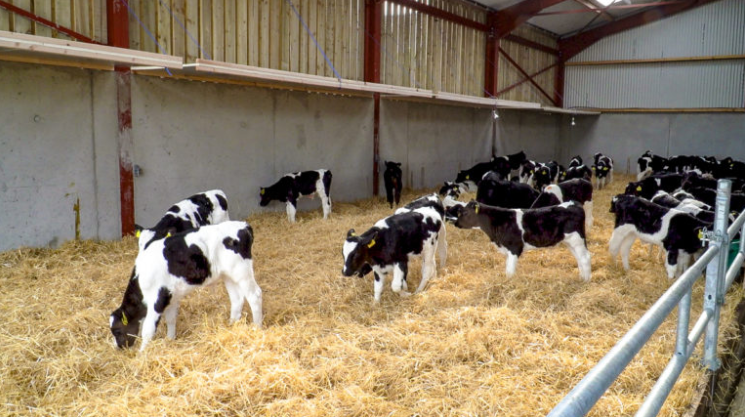In the first article/video of the Calf Health and Management Series, Teagasc Green Acres Calf to Beef Programme manager, Alan Dillon, explains how much beef farmers can afford to pay for dairy-beef calves, and outlines the factors that need to be considered in terms of production costs.
As we all know, we are in the centre of a period of beef price uncertainty and the economics of acquiring such animals and carrying them to beef must be studied.
Firstly, Alan outlines that there has been approximately a €0.15/kg drop in base quotes for factory-fit steers over the past year or so, with quotes currently hovering around the €3.60-3.65/kg mark.
In terms of carcass weights, generally speaking, dairy-bred steers return a carcass of approximately 315-320kg at 24 months.
This would equate to a circa €50/head drop at slaughter in approximately two years’ time, if current beef price trends continue.
In year one of the Teagasc Green Acres Calf to Beef Programme, there was a big variation depending on age and quality, but €60-70 was paid – on average – by participants for Friesian bull calves at three-to-four weeks-of-age last year.
“Hereford, Aberdeen Angus and continentals would have made more, but we would be looking at a significant drop in calf price of around €50/head to compensate for the loss of beef price over the past 12 months,” Alan said.
Do the sums
Unfortunately, there is no fortune to be made in dairy calf-to-beef production, or indeed any other beef production system, under current prices available from Irish beef processors.
Farmers are urged to have their homework done, know their total cost of production and calculate their fixed costs correctly.
On a typical dairy calf-to-beef operation – farmers slaughtering steers at 24 months-of-age, stocked at 2.5LU/ha, and running at a high level of efficiently – variable and fixed costs amount to approximately €1,000 – this excludes calf purchase price.
“So, if we take last year, €60-70 was paid for a Friesian bull calf, and our cost of production at the highest level of efficiency is around €1,000, then we need €1,070 just to break even on that animal.
“Typically, the Friesians are coming in at around that at the minute when they’re slaughtered – approximately €1,050-1,100/head – so margins are very, very tight at the minute on dairy calf-to-beef farms,” Alan explains.
Know your costs
The total cost of bringing steers through to slaughter at 24 months-of-age can be seen in the table (below).
The data surrounding the costings – based on a high level of efficiency and stocking rate (2.5LU/ha) – was taken from research from Johnstown Castle; Phase One of the Teagasc Green Acres Calf to Beef Programme; and the national database.
All of the farms involved in the programme will carry calves through to beef, aiming for a slaughter date at approximately 24 months; this system tends to be the most profitable.
However, Alan noted that some farmers may move towards an under 30-month operation. Farmers implementing this can increase the profit per head – due to lower input costs and seasonal higher prices, but less numbers can be carried on the farm.
“While your profit per head may increase slightly, your profit per hectare generally starts to decrease – due to a lack of output,” he said.

